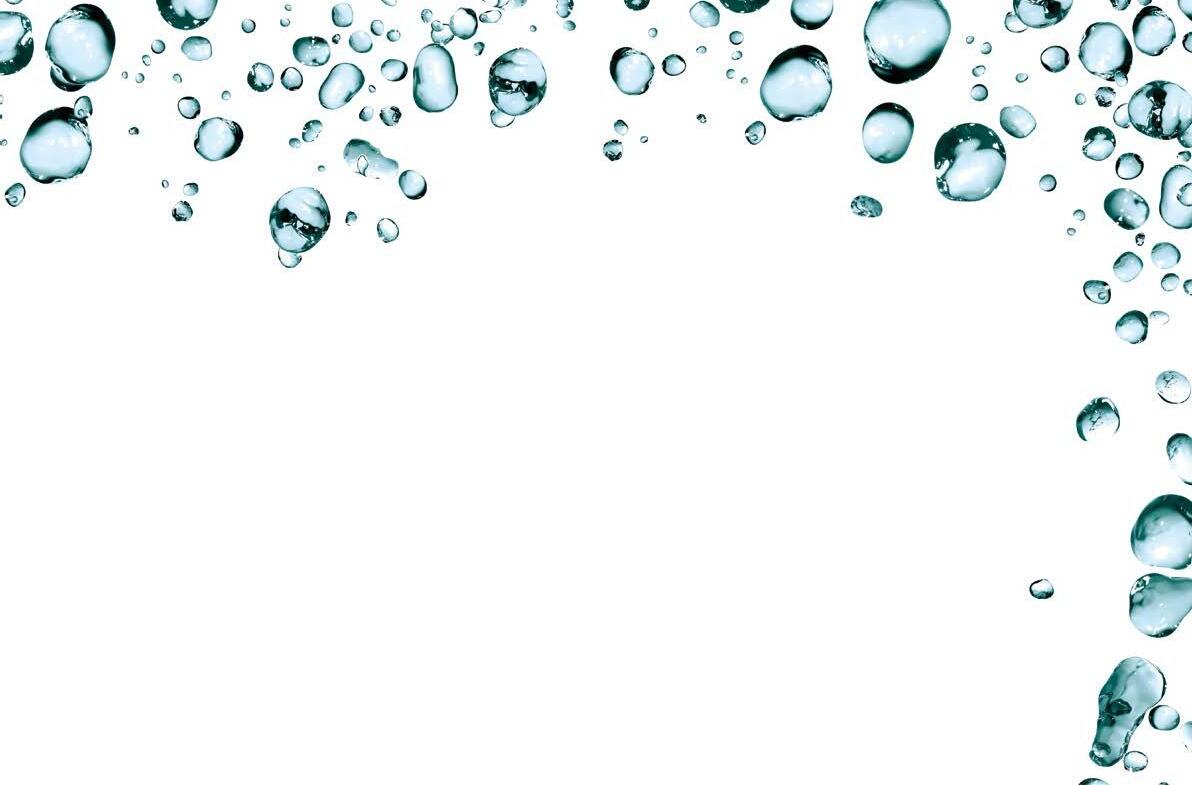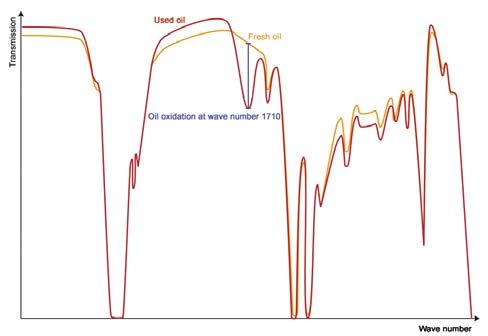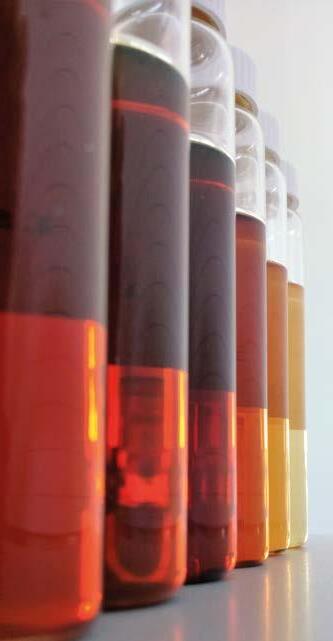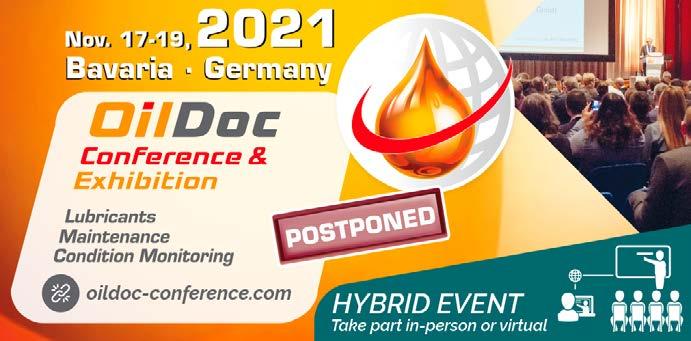
5 minute read
Modern lubricants age differently
Oxidation index clearly shows the ageing behaviour
In many systems, online sensors continuously measure the relative humidity and temperature of the oil. However, their measurements do not predict how the relative humidity and saturation limit react when temperatures change or even how high the total water content is. But it is precisely this knowledge that is important so that appropriate measures can be taken in good time, in order to protect the systems from malfunctions caused by free water.
OELCHECK provides a remedy and now offers two additional and completely new extra tests:
Determination of the relative humidity in % at specified temperatures between 30 and 80 °C.
Calculation of the water saturation curve in the range of 30 to 80 °C.
The creation of a water saturation curve requires the determination of the absolute water content in ppm using the Karl Fischer method. Water saturation is determined analogously with this value and from the relative humidity measured at a wide range of temperatures. On this basis, OELCHECK creates the corresponding water saturation curve, a new maintenance tool.
If the absolute water content (at a particular temperature) is below the water saturation curve, the water is dissolved in the oil.
If the water content (at a particular temperature) is above the curve, it can be assumed that the oil is cloudy or free of water, because the oil is already fully saturated with water.
A practical example: The oil circulation system of a paper machine is filled with 5,000 litres of CLP 100. The typical water saturation in such a system is usually approx. 90%.
The laboratory analysis at 25 °C shows a clear oil, but some water droplets have settled in the container. The Karl Fischer method determines an absolute water content of 284 ppm.
At the time of sampling at 45 °C, a water content of 425 ppm can be calculated from the water saturation diagram.
At an operating temperature in the oil tank of 70 °C, the oil is transparent, although the water content determined on the basis of the water saturation curve is assumed to be 927 ppm at 90% saturation.
This means that when the oil cools down from 70 °C to 25 °C, 643 ppm of free water can separate from the oil.
For the 5,000 litres in the paper machine, this would mean that approximately three litres of free water could separate from the oil during the cooling phase from 70 °C to 25 °C. This free water should be continuously removed during the cooling phase. Without knowledge of the water saturation curve, it would not be possible to calculate or estimate the released water content.
Conclusion
With the new water saturation curve, proactive maintenance with water removal methods can take counteractive measures sooner – before the water saturation limit of an oil is exceeded and water is released at standstill. Using the saturation process, checking the oil fill depending on the temperature is significantly simplified. It becomes clear whether oil maintenance measures, drying or even an oil change are necessary or whether, for example, the oil should not fall below certain standstill temperatures..
Every lubricant ages over the course of its service life. The extent to which an ageing process has progressed is shown in the laboratory report in particular by the "oxidation" data. Among other analytical values, the oxidation value allows conclusions to be drawn about the remaining operating time of the oil. Oxidation is determined by IR spectroscopy in accordance with DIN 51453. This is done by passing infrared light through an oil-filled cell. The decrease in light intensity is measured as absorption. This method has already been defined at times when often simply refined mineral oils were used as base oils. Nowadays, for higher grade Group II or III oils or for partially synthetic or fully synthetic base products, oxidation can often no longer be determined with the relatively simple method, which is only defined for a certain "wave number".
OELCHECK has therefore further developed the method for detecting oxidation. Below the "oxidation" value, which is stated in absorption/cm oil layer thickness (A/cm), modern oils have recently also been given the dimensionless "oxidation index" in the laboratory report. While for oxidation in A/cm at a specific point in the graph, at a "band" at a wave number of 1710 cm1, the change in length compared to the base spectrum is calculated in cm, the index is based on an area calculation. In a differential spectrum, the oxidation index therefore not only looks at the change in length of a single peak, but also determines a change in area that can be calculated in a range between two wave numbers in which oxidative changes occur. The number listed in the laboratory report under "Oxidation Index" essentially corresponds to the increase in this oxidation area in cm². OELCHECK tribologists determined the left and right wave numbers and thus the calculation range for the oxidation index, depending on different oils or their intended use. Thanks to the oxidation index defined in this way, in contrast to the pure DIN line calculation in A/cm, the oxidation of modern lubricants can also be detected at a very early stage. The oxidation index thus provides reliable information for an upcoming oil change.
Oxidation in A/cm
As mineral oils age, oxygen molecule chains form double bonds to certain hydrocarbon compounds in the oils and form new molecular chains. When infrared light passes through these molecular chains, this light is absorbed more readily than in fresh oil. By subtracting the used and fresh oil spectrum, the oxidation is indicated in the laboratory report as "absorption of the IR radiation" in (A/cm), which refers to a path length of one centimetre (oil layer thickness) of the measuring cell.
A standard reaches its limits
When determining oxidation using IR spectroscopy in accordance with DIN 51453, it is assumed that a clear peak can be seen in the IR spectrum of an oxidized oil at a wave number of 1,710 cm1, which is influenced by the oxygen double bonds. This wave number was therefore used as the basis for the oxidation determination of mineral oil based used oils from engines and industrial lubricants.

In today’s lubricants, which use better refined or partly synthetic base oils or modern additive technologies, however, the peakbased approach no longer provides sufficiently interpretable findings. Even in trend analyses over several 10,000 hour periods, OELCHECK tribologists are increasingly confronted with oxidation values that hardly change, although changes in viscosity, acids or oxidation inhibitors indicate an increasing ageing of the lubricant.
Many of the newer lubricants contain synthetic base oils based on esters. In these oils, not only do the wear protection additives have a better effect, they are also more temperaturestable and age less. These synthetic long term oils are particularly advantageous for oils in systems where oil changes are complex and expensive, or which run at high temperatures. In oil analyses, however, it is detrimental that oxidation can no longer be detected because the ester components in the IR spectrum overlap precisely in the area with the oxygen double bonds in which oxidation is calculated according to the DIN method. Oxidation also cannot be calculated for lubricants that contain viscosity index improvers (VI improvers) or special additives that already have a clear peak area at 1,710 cm1 in fresh oil. For modern lubricants, the specification of oxidation according to DIN 51453 is in many cases extremely inaccurate; for oils with ester components, oxidation according to DIN cannot be specified. To ensure that accurate information on oil ageing is also possible for lubricants for which DIN oxidation cannot be determined, OELCHECK tribologists have taken into account the increase in viscosity, the reduction in additive content, the degradation of antioxidants as well as the increase in AN (acid






